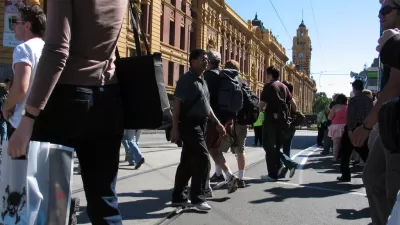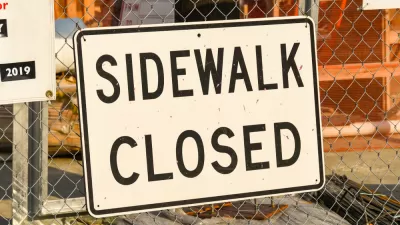A post on Ars Technica digs into the complicated world of pedestrian modeling and identifies a culprit in the problems with existing models: indecisive people.

Chris Lee introduces the research of Alessandro Corbetta, from the Technical University of Eindhoven, into the difficulties of creating reliable models for pedestrian behavior.
The problem:
Unfortunately, pedestrian models are not very well tested against data. Most experiments involve paying university students to walk along corridors and through doors under highly artificial conditions. In part, this is because it has been very difficult to obtain data from natural settings, where you need to track individual pedestrians as they walk through some area of interest.
The solution:
Corbetta set [Kinect] cameras up in two locations: the main thoroughfare at Eindhoven train station and a link corridor between one of the university buildings and the nearest cafeteria. From there, he recorded data for a year.
Corbetta's findings after crunching the quarter of a million trajectories he discovered during the experiment revealed some of the behavior that makes pedestrian modeling so difficult. Namely, that some people change their minds en route, and turn around. The article goes into more detail about how Corbetta accounted for their indecision for the ongoing project of building reliable pedestrian models.
FULL STORY: Models of pedestrian flow stumble because people change their minds

Maui's Vacation Rental Debate Turns Ugly
Verbal attacks, misinformation campaigns and fistfights plague a high-stakes debate to convert thousands of vacation rentals into long-term housing.

Planetizen Federal Action Tracker
A weekly monitor of how Trump’s orders and actions are impacting planners and planning in America.

In Urban Planning, AI Prompting Could be the New Design Thinking
Creativity has long been key to great urban design. What if we see AI as our new creative partner?

King County Supportive Housing Program Offers Hope for Unhoused Residents
The county is taking a ‘Housing First’ approach that prioritizes getting people into housing, then offering wraparound supportive services.

Researchers Use AI to Get Clearer Picture of US Housing
Analysts are using artificial intelligence to supercharge their research by allowing them to comb through data faster. Though these AI tools can be error prone, they save time and housing researchers are optimistic about the future.

Making Shared Micromobility More Inclusive
Cities and shared mobility system operators can do more to include people with disabilities in planning and operations, per a new report.
Urban Design for Planners 1: Software Tools
This six-course series explores essential urban design concepts using open source software and equips planners with the tools they need to participate fully in the urban design process.
Planning for Universal Design
Learn the tools for implementing Universal Design in planning regulations.
planning NEXT
Appalachian Highlands Housing Partners
Mpact (founded as Rail~Volution)
City of Camden Redevelopment Agency
City of Astoria
City of Portland
City of Laramie





























